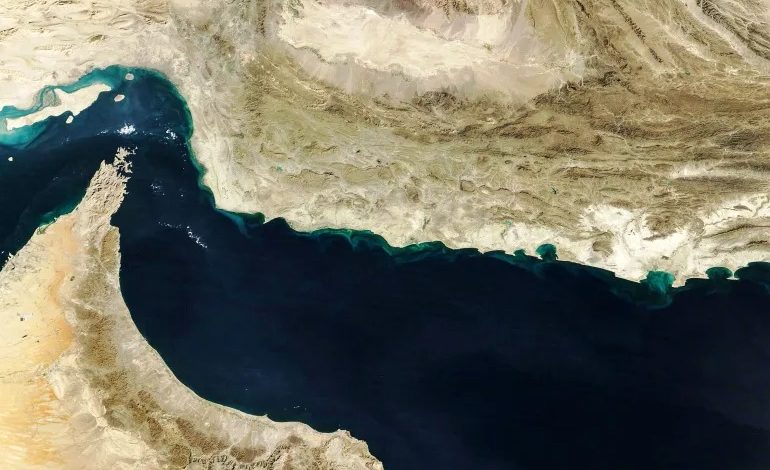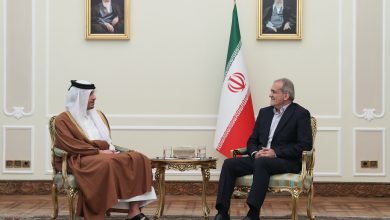Potential Global Crisis Looms with Strait of Hormuz Closure
The conflict initiated by zionist against the Islamic Republic of Iran continues to present significant challenges to regional and global stability, particularly in light of the steadfast backing from the United States and European nations for Israel's military actions.

The ongoing conflict initiated by Israel against the Islamic Republic of Iran persists as a significant threat to both regional and global stability. This escalation is compounded by the steadfast backing Israel receives from the United States and European nations, placing Iran in a challenging predicament where it must weigh its defensive strategies carefully. A key consideration for Iran is the potential closure of the Strait of Hormuz, a strategic waterway. The implications of such an action could be profound, affecting global oil supplies and escalating tensions further.
Energy affairs expert and economist Amer Al-Shobaki has highlighted the renewed significance of the Strait of Hormuz in light of the ongoing conflict. This crucial maritime passage has emerged as a center of geopolitical tension, with the potential to significantly alter global economic dynamics and energy markets. This development comes at a time of increasing vulnerability in regional and international balances.
In a detailed analysis, Al-Shobaki highlighted the critical significance of this narrow maritime corridor, which separates Iran from both the UAE and Oman. The waterway serves as a crucial conduit connecting the Persian Gulf to the Gulf of Oman and the Arabian Sea. It stands as one of the world’s most pivotal maritime chokepoints, facilitating the daily transit of over 16.5 million barrels of oil, approximately 40% of the global seaborne oil trade. Additionally, it plays a key role in the transport of more than 20% of worldwide liquefied natural gas (LNG) trade and 22% of essential strategic goods.
Al-Shobaki highlighted China’s significant dependence on this region for approximately 5.5 million barrels of oil daily, which constitutes almost half of the country’s overall daily consumption. Similarly, South Korea, Japan, and India are also deeply reliant on Gulf oil and gas to fuel their industrial economies.
He emphasized the intricate nature of the scenario, noting that Iran, even amid its threats to close the strait, continues to export its oil via this route. The country also utilizes alternative ports such as Kharg Island and the Jask terminal, while importing approximately a quarter of its liquefied natural gas requirements from the same area.
Al-Shobaki has highlighted a series of recent threats from Iran, which have emerged following Israeli attacks on its nuclear and military sites. These threats include explicit statements from Iran about potentially closing the strait, along with intelligence reports suggesting that Tehran has stockpiled approximately 6,000 naval mines. It’s estimated that Iran could deploy 100 mines daily, potentially obstructing maritime navigation within a 48-hour timeframe. The country’s Kilo-class submarines are prepared for such operations. In response, insurance firms have begun increasing the risk assessments for crossing this strategically vital passage.
Energy analyst Al-Shobaki emphasized that should these threats come to fruition, oil prices would swiftly escalate beyond $100 per barrel, potentially reaching $130 or even $150. This scenario could be exacerbated if the Houthis were to block the Bab al-Mandab Strait, a strategic chokepoint, as they have done previously.
The potential for escalation is heightened as this region serves as a significant hub for refined diesel exports to Europe, Asia, and South America. Any interruptions could exert immediate strain on fuel markets, especially diesel, which has experienced considerable price hikes in recent weeks.
He noted the significant impact on natural gas markets, highlighting Europe’s ongoing efforts to decrease its reliance on Russian gas, making it increasingly dependent on Qatari LNG. Amid rising tensions, global gas prices have surged by 8%, with expectations of further volatility should the crisis persist, particularly as summer escalates electricity demand.
Al-Shobaki cautioned that the disruption might extend beyond merely impacting oil and gas exports, potentially unleashing significant global financial instability. A surge in oil prices could trigger a substantial inflationary wave, thereby challenging central banks’ strategies, especially those of the US Federal Reserve, in regulating interest rates and preventing stagflation.
An expert analysis indicates that a shutdown of the Strait of Hormuz could severely impact commercial shipping, as well as the supply of food and industrial goods. Insurance and freight expenses could potentially surge by more than 300%, directly elevating consumer prices and exacerbating economic pressure on both developing and advanced economies.
The New York Times has highlighted that Iran possesses the maritime and logistical prowess necessary to fully obstruct the Strait of Hormuz. This strategic maneuver could effectively incapacitate naval operations of the United States in the Gulf region.
Recent reports have highlighted that senior US military officials convened at the White House to discuss preparations for potential scenarios involving the deployment of sea mines, in the event of direct US involvement in strikes against Iran. The Pentagon is actively evaluating all potential Iranian response scenarios, given that Iran maintains a significant cache of ballistic missiles, a robust naval force, and active military presence across the region.
The United States military has expressed concerns that Iran might attempt to trap American mine-sweeping vessels in a strategic location in the strait. At present, the US Navy has four minesweepers in the Gulf. Iran, however, is equipped with an extensive array of naval mines. These range from compact magnetic mines that adhere to ship hulls and explode after a set time, to larger floating variants, as well as sophisticated bottom mines that can be triggered by magnetic, sound, pressure, and seismic signals.
The Strait of Hormuz, a pivotal maritime corridor, serves as a vital link between the Persian Gulf and the Gulf of Oman, extending into the Arabian Sea. Its strategic importance is underscored by its narrowest width of merely 33 kilometers, with navigable shipping lanes restricted to only 3 kilometers in each direction.
Approximately 20% of global oil consumption, equating to around 20 million barrels per day of crude oil, condensates, and fuel, is transported through this strategic strait.
Several key OPEC nations, including Saudi Arabia, Iran, the UAE, Kuwait, and Iraq, primarily transport their crude oil exports through this passageway, particularly targeting Asian markets. Notably, Saudi Arabia and the UAE are making concerted efforts to explore alternative routes in order to reduce their dependence on this strategic strait.
Qatar, recognized as the leading global exporter of liquefied natural gas (LNG), channels nearly its entire LNG supply via the Strait of Hormuz. This strategic waterway is pivotal, catering to approximately 25% of the global demand for LNG.
A temporary closure of the strait could lead to a significant surge in energy prices, potentially sparking a global economic crisis.







